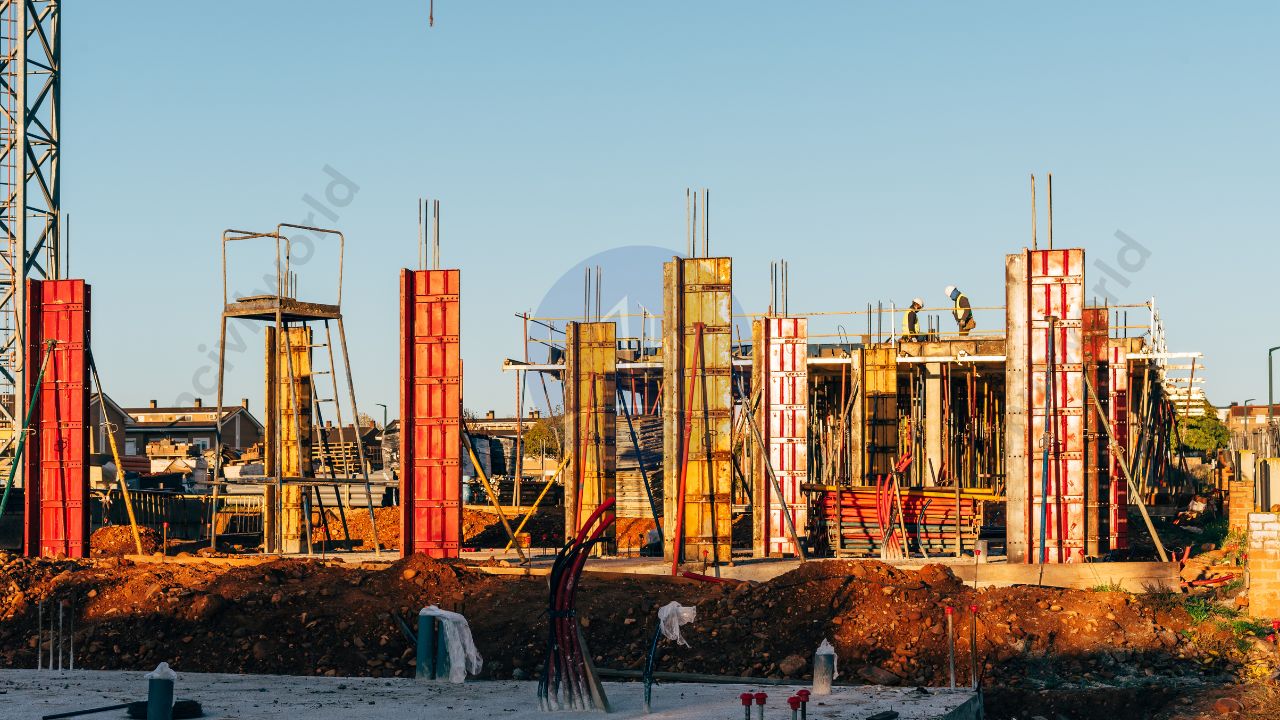The effectiveness of a corrosion control coating mainly depends on the ability to perform long term and essential that it should stay bonded to the substrate during the entire life span of the structure.
ADVANTAGES OF FUSION BONDED EPOXY SYSTEM
The coating poses a strong adhesion to the coated surface.
The coating has tremendous chemical and mechanical resistance in all climatic conditions and poses high mechanical impact strength.
PERFORMANCE PROPERTIES OF FUSION BONDED EPOXY
a) F B E poses low permeability to water vapour and gas pressure.
b) F B E is abrasion-resistant and can be handled and conveyed without damage.
c) F B E protected steel poses strong resistance to corrosive soil, saltwater, microorganisms, etc
d) Have an ageing resistance against heat and have very good dielectric properties.
The application process of Fusion bonded Epoxy is different from the conventional method of epoxy applications.
APPLICATION PROCESS OF FUSION BONDED EPOXY ON REBAR
Resin and hardener in powder form are applied over the steel and heated to a particular temperature. A thin continuous film is formed fusing the powder and this process is FUSION BONDING.
This process is not irreversible. Once the process is complete it cannot be returned to its original form anymore.
There are four application methods used for fusion-bonded coatings. They are fluidized bed process, electrostatic bed process, electrostatic spray process, and plasma spray process. The electrostatic spray process is the most commonly used process of applying powders.
ELECTROSTATIC SPRAY PROCESS- METHODOLOGY OF APPLICATION
a) SURFACE PREPARATION
Surface preparation is the most important activity which is required to bond a coating to the rebar surface. Shot blast cleaning is the best & effective method that can remove mill contaminants, mill scale, rust, etc, and make the surface rough. Shot blast cleaning provides an anchor of 40 -100 milli micron depth on the steel surface and increases the effective surface area of steel. The rebar are blast cleaned to a near white metal finish as per Swedish standards.
In the blast cleaning process, a blast wheel uses a centrifugal to propel the abrasive (grits used for blasting) in a controlled direction speed and quantity. Normally two blast wheels are provided at the top and 2 at the bottom of the cabinet over the top and bottom of the rebar pass line. The location of the blast wheel shall be in an angle where the total area of steel shall be covered.
b) PRE -HEATING
Heating can be done in various methods, but induction heating is the commonly used method for preheating. Induction heating is the process of heating metal by electromagnetic induction and developing eddy currents. Eddy currents generated within the metal and resistance induces Joule heating of the metal. For preheating using induction heating, the steel is passed through a high-frequency AC magnetic field which heats steels to the temperature required for the Fusion Bonded Epoxy application. The typical application temperature ranges between 225 degrees to 250 degrees.
c) FUSION BONDED EPOXY COATING
The heated rebar is passed through a powder spray booth where the dry epoxy powder is sprayed through several spray nozzles. Immediately when powder leaves the spray gun, an electrical charge is imparted to the particles. These electrically charged particles are attracted to the grounded steel surface providing even coating coverage. When the dry powder hits the hot steel, it melts and flows into the anchor profile (i. e., the microscopic peaks and the valleys on the surface) and covers the ribs and deformations of the rebar making good bondage with steel.
The heat also initiates a chemical reaction that causes the powder molecules to form complex cross-linked polymers that give the material its beneficial properties. Coating thickness in the range of 50 to 150 micrometers is usually obtained, even though lower or higher thickness ranges might be specified, depending on service conditions.
The molten powder is converted to a solid coating, once the ‘gel time’ is over, which occurs within a few seconds after the coating application. The resin part of the coating when subjected to heat undergoes a process known as cross-linking. This process is known as ‘curing’ in hot conditions. Complete curing is achieved either by the residual heat on the steel or by the help of additional heating sources. Full curing can be achieved in a minute or two depending upon the coating system used.
d) WATER QUENCHING
The coated steel after hot curing is passed through a water tunnel and subjected to water spray for cooling the bars.
e) INSPECTION AND TESTING
FBE coated reinforcement bars are tested as per the relevant standard (IS 13620 – 1993). Checks for thickness are also carried out. All batches are laboratory tested for chemical resistance, short spray, resistance in continuous boiling water, abrasion resistance and impact resistance, etc. Any weak patches observed shall be marked and touched up before loading in a rack area. They are bundled in the rack area for transporting to destinations.
DISADVANTAGES OF FUSION BONDED EPOXY.
Fusion bonded epoxy coatings can affect the bond strength between coated rebars and concrete. Apart from that, the coating process is factory based and the rebar has to be handled and transported to the destinations. These double handlings may damage the coatings. So handling of bars has to be done with utmost care to minimize damage to the coatings.
The performance of the FBE coated rebars is dependent on the coating quality. Patching the defective areas may not be as effective as factory coating and this may act as a corrosion initiator in the later stage because due to the lack of cathodic protection systems.
Corrosion cells accumulate in the damaged area of the reinforcement bars leads to the delamination of the epoxy coating followed by rusting.
FBE coated reinforcement bars undergo degradation on long term exposure to sunlight. FBE coated reinforcement bars shows generally poor alkali resistance.


